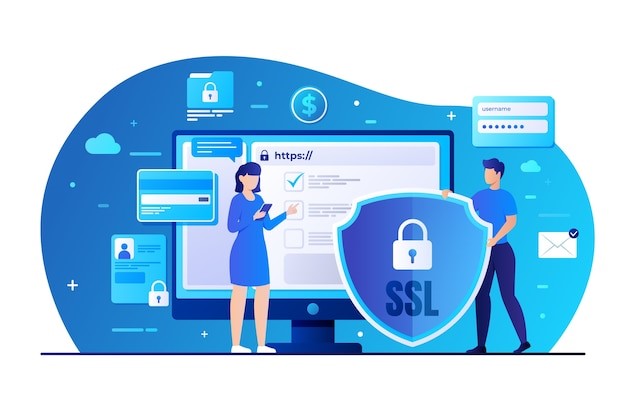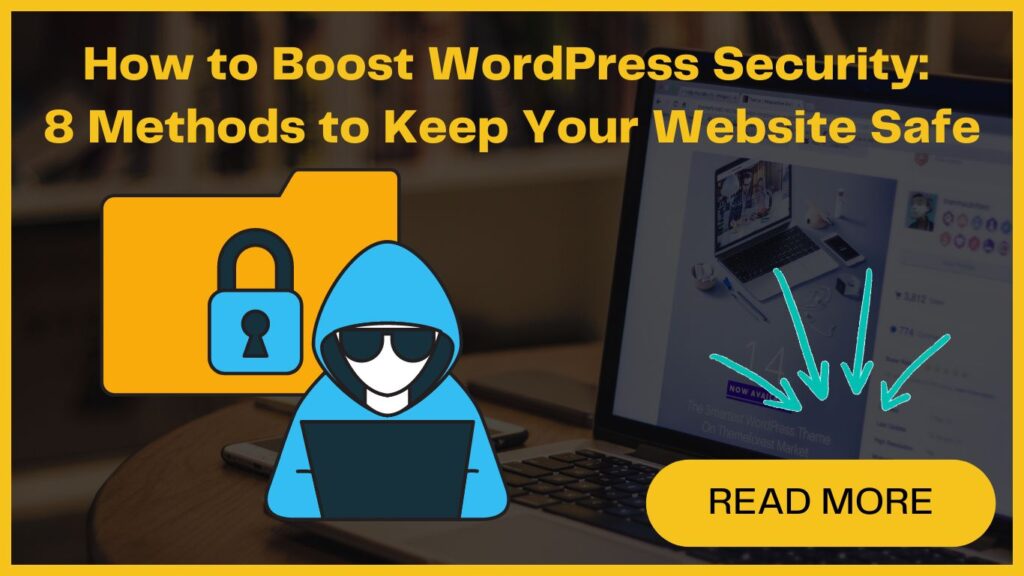
Is your WordPress site safe from cyber-attacks? Is your customers’ and visitors’ data secure from common malicious threats?
WordPress site security is an extremely critical concern for website owners.
Here is a shocking fact-
Google adds over 10,000 malicious websites to its malware blacklist every day, while around 50,000 websites get blacklisted for phishing every week.
With the increasing popularity of the internet, the threat of cyber security is also increasing. Hackers use new tactics, such as malware, phishing, and brute force attacks every day, to hack websites and steal sensitive data.
Therefore, it is important to keep your website safe and protected. We have compiled a list of a few methods to prevent hackers from wreaking havoc.
# 8 Top Methods for WordPress Site Security
By implementing effective WP security measures, you can significantly reduce the risk of cyberattacks, prevent data breaches, and safeguard your customers and website visitors from potential harm.
Let’s get started-
1. Use CDN Firewall
With WordPress hacking on the rise, incorporating a CDN-level firewall is a highly effective security strategy. It helps to protect your WP site from potential attacks by malicious actors and bots. These types of firewalls create an additional layer of security that won’t let any suspicious traffic reach server.
Furthermore, a CDN-level firewall can also help to improve a website’s performance by caching static content and delivering it more quickly and efficiently to visitors. You can also achieve faster page load times and a better user experience by using a CDN firewall.
2. Secure all passwords and enable two-factor authentication
To make your WordPress site more secure, you need to increase the complexity of your passwords and enable two-factor authentication.
Passwords are the first line of defense against hackers. So, keep it too hard to guess. Ideally, a good password should be a minimum of 8 characters long and contain a mix of uppercase and lowercase letters, numbers, and symbols. Avoid using the most common and easy-to-guess password just like your birthdate.
Furthermore, enable two-factor authentication (2FA). This means that users need to verify their sign-on with an alternate device. This is the simplest yet most effective method to secure your login — and, yes, it works.
Expert tip- Strong passwords don’t need to be too long and complex. Use special symbols and numbers instead of simple letters. For example, 11@williAm@! instead of William!
3. Selecting the right hosting provider
Now let’s consider the importance of selecting the right hosting provider for your WordPress website security. It’s essential to thoroughly research the hosting service’s security protocols and measures to keep your website and its data safe against potential threats and attacks.
It is important to consider how quickly the hosting provider can detect and respond to the situation of a security breach. What it can do to minimize damage and prevent any data loss.
To simplify your research and decision-making process, there is a list of recommended WordPress hosting providers, which have been carefully chosen depending on their wonderful track record in security, reliability, and performance. You can choose from WP Engine, Nexcess, Kinsta, WordPress.com, Bluehost, Flywheel, Cloudways, GoDaddy, and many others.
4. Install a WordPress Backup Solution
Keep in mind that nothing is 100% secure. If hackers can steal data from government websites, why can’t from you?
In such a scenario, you can rely on your WordPress site backup. It can save you from the havoc caused by a security attack on your site. Backups allow you to quickly restore your WordPress site in case of emergencies.
Fortunately, there are many free and paid plugins such as UpdraftPlus, Duplicator, or BlogVault that can make your WordPress backup task smooth and super easy.
Expert tip- The most important thing you need to know when it comes to backups is that you must regularly take full-site backups and save them to a remote location (not your hosting account). You can store it on a cloud service like Amazon, or Dropbox, or private clouds like Stash.
5. Using WordPress Security Plugin
Once the backup is done, the next big thing we need to ensure the WordPress site security is to set up an auditing and monitoring system that keeps track of all website activities. This includes monitoring failed login attempts, WordPress malware scans, and file integrity checking.
Fortunately, this process can be done easily by installing a free WordPress security plugin, such as Sucuri Scanner. After installing the plugin and activating it, you’ll need to access the Sucuri menu within your WordPress admin panel.
The first step is to generate a free API key, which will enable critical features such as audit logging, email alerts, and integrity checking. This way, you’ll receive an alert on potential security issues or breaches on your site and can quickly take action to mitigate the risks.
6. Move your WordPress Site to SSL
SSL (Secure Sockets Layer) is a technology that encodes the transfer of data between a website and a user’s browser. With SSL it becomes difficult for anyone to seize and steal information.
When SSL is enabled, your website will use HTTPS rather than HTTP, and a padlock icon will also appear beside the website address in the browser.
However, SSL certificates’ high cost caused many website owners to compromise their site’s security by opting for insecure protocols.
To address this issue, “Let’s Encrypt”- a non-profit organization supported by major companies such as Google Chrome, Mozilla, and Facebook, offers free SSL certificates to website owners.
Many hosting companies to offer free SSL certificates for WordPress websites. If your hosting company does not offer one, you can buy an SSL certificate from Domain.com, which provides a reliable and affordable option with a $10,000 security assurance and a TrustLogo security seal.
7. Restrict Login Attempts
WordPress allows users unlimited login attempts by default. This makes your WordPress website susceptible to brute-force threats. In these login attempts, hackers try different combinations to crack passwords and gain access to your site.
However, this security issue can be addressed by limiting the number of failed login attempts allowed for each user.
8. Remove the XML-RPC.php file
This file allows unauthorized access to your site which enables hackers to add malicious code or even take control of your site. Moreover, attackers can perform brute-force login attempts using this file, so just securing your login page may not be enough.
Thankfully, removing the XML-RPC file can be helpful. It’s a straightforward process in which you can connect to your site via FTP and delete the file from your server. After removing the XML.php file, keep in mind to update your .htaccess file to block any future access to the file.
Wrapping Up
Cybercriminals are constantly looking for new ways to steal sensitive information from businesses. Therefore, it is essential to implement the effective WordPress security measures mentioned in this post to protect your website’s sensitive data.
If you are a non-tech guy and finding difficulty in implementing these security measures, reach out to us. Our WordPress security audit experts use advanced and effective methods to counter these threats and prevent attacks. By staying proactive and vigilant in securing your website and choosing us as your WordPress security partner, you can reduce the risk of data breaches and keep your business and customers safe.




